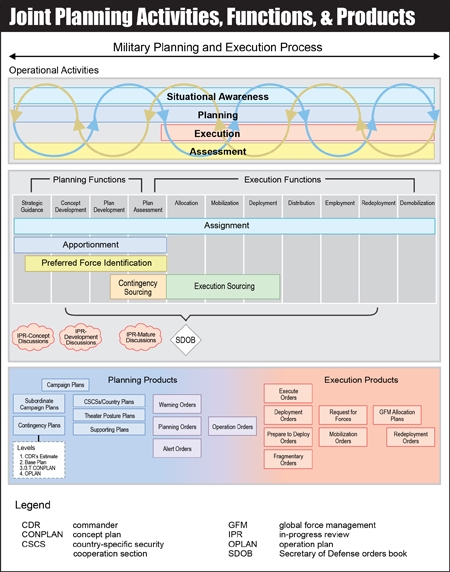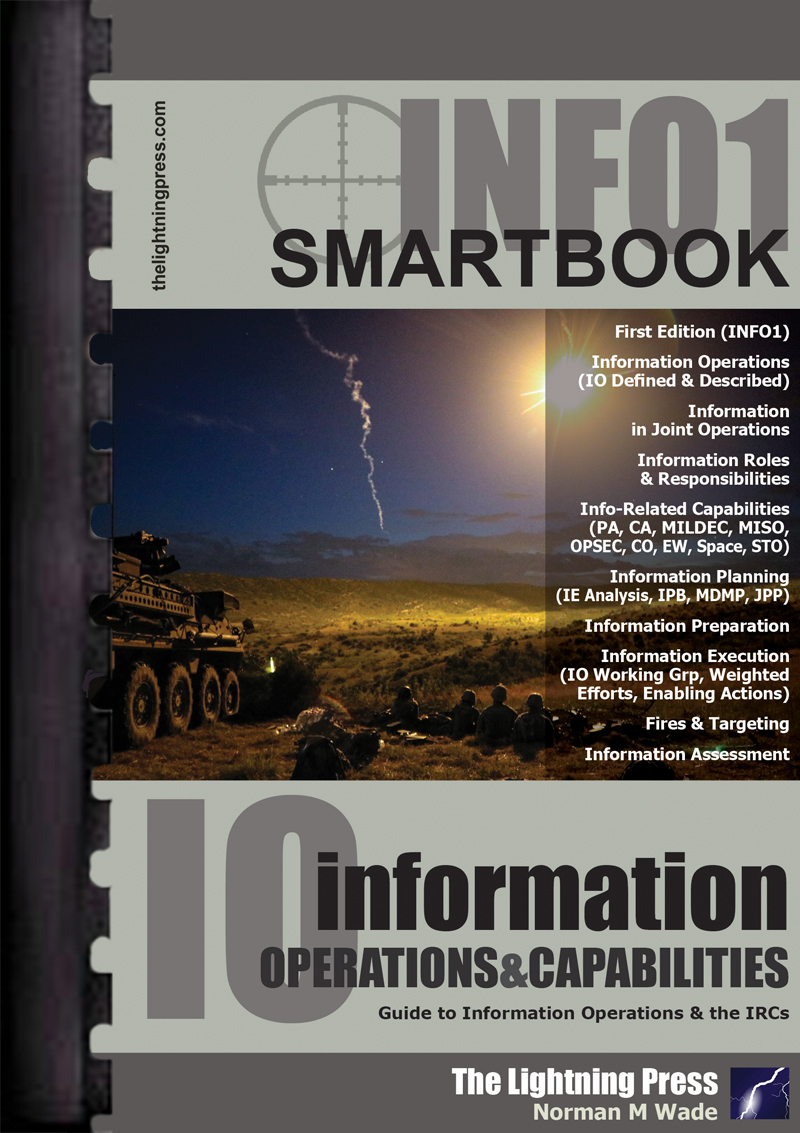* Editor’s Note: The joint doctrinal construct of “Adaptive Planning and Execution Enterprise (APEX)” as described below from JP 5-0 (Jun ’17) has been superseded by the new joint doctrinal construct of “Joint Planning” from the latest edition of JP 5-0 (Dec ’20) as presented in JFODS6. Read our updated article HERE.
Adaptive Planning and Execution Enterprise (APEX) integrates the planning activities of the JPEC and facilitates the transition from planning to execution. The APEX enterprise operates in a networked, collaborative environment, which facilitates dialogue among senior leaders, concurrent and parallel plan development, and collaboration across multiple planning levels. Strategic direction and continuous dialogue between senior leaders and planners facilitate an early understanding of the situation, problems, and objectives. The intent is to develop plans that contain military options for the President and SecDef as they seek to shape the environment and respond to contingencies. This facilitates responsive plan development that provides up-to-date planning and plans for civilian leaders. The APEX enterprise also promotes involvement with other USG departments and agencies and multinational partners.

APEX encompasses four operational activities, four planning functions, seven execution functions, and a number of related products (see Figure II-4). Each of these planning functions will include IPRs as necessary throughout planning and execution.
While joint planning has the inherent flexibility to adjust to changing requirements, APEX incorporates policies and procedures to facilitate a more responsive planning process. APEX fosters a shared understanding of the current OE and planning through frequent dialogue between civilian and military leaders to provide viable military options to the President and SecDef. Continuous assessment and collaborative technology provide increased opportunities for consultation and updated guidance during the planning and execution processes.
APEX encompasses four operational activities, four planning functions, seven execution functions, and a number of related products. Each of these planning functions will include IPRs as necessary throughout planning and execution. IPR participants are based on the requirements of the plan. For example, plans directed by the GEF or JSCP generally require SecDef-level review, while plans directed by a CCDR may require only CCDR-level review.
IPRs are an iterative dialogue among civilian and military leaders at the strategic level to gain a shared understanding of the situation, inform leadership, and influence planning. Topics such as planning assumptions, interagency and multinational participation guidance, supporting and supported activity requirements, desired objectives, key capability shortfalls, acceptable levels of risk, and SecDef decisions are typically discussed. Further, IPRs expedite planning by ensuring the plan addresses the most current strategic assessments and objectives.
Supported CCDR
The supported CCDR has primary responsibility for all aspects of a task assigned by the GEF, the JSCP, or other joint planning directives. In the context of joint planning, the supported commander can initiate planning at any time based on command authority or in response to direction or orders from the President, SecDef, or CJCS. The designated supporting commanders provide planning assistance, forces, or other resources to a supported commander, as directed.
Supporting Commander
Supporting commanders provide forces, assistance, or other resources to a supported commander in accordance with the principles set forth in JP 1. Supporting commanders prepare supporting plans as required. A commander may be a supporting commander for one operation while being a supported commander for another.
 This article is an extract from “JFODS5-1: The Joint Forces Operations & Doctrine SMARTbook, 5th Ed. w/Change 1 (Guide to Joint, Multinational & Interorganizational Operations)” by The Lightning Press. Download a free PDF sample and learn more at: JFODS5-1: The Joint Forces Operations & Doctrine SMARTbook, 5th Ed. w/Change 1 (Guide to Joint, Multinational & Interorganizational Operations). Additionally, for 400 pages of detailed discussion of joint strategic and operational planning refer to Joint/Interagency SMARTbook 1 – Joint Strategic & Operational Planning, 2nd Ed. (Planning for Planners).
This article is an extract from “JFODS5-1: The Joint Forces Operations & Doctrine SMARTbook, 5th Ed. w/Change 1 (Guide to Joint, Multinational & Interorganizational Operations)” by The Lightning Press. Download a free PDF sample and learn more at: JFODS5-1: The Joint Forces Operations & Doctrine SMARTbook, 5th Ed. w/Change 1 (Guide to Joint, Multinational & Interorganizational Operations). Additionally, for 400 pages of detailed discussion of joint strategic and operational planning refer to Joint/Interagency SMARTbook 1 – Joint Strategic & Operational Planning, 2nd Ed. (Planning for Planners).
Browse additional military doctrine articles in our SMARTnews Blog & Resource Center.
About The Lightning Press SMARTbooks. Recognized as a “whole of government” doctrinal reference standard by military, national security and government professionals around the world, SMARTbooks comprise a comprehensive professional library. SMARTbooks can be used as quick reference guides during operations, as study guides at education and professional development courses, and as lesson plans and checklists in support of training. Browse our collection of Military Reference SMARTbooks to learn more.











































